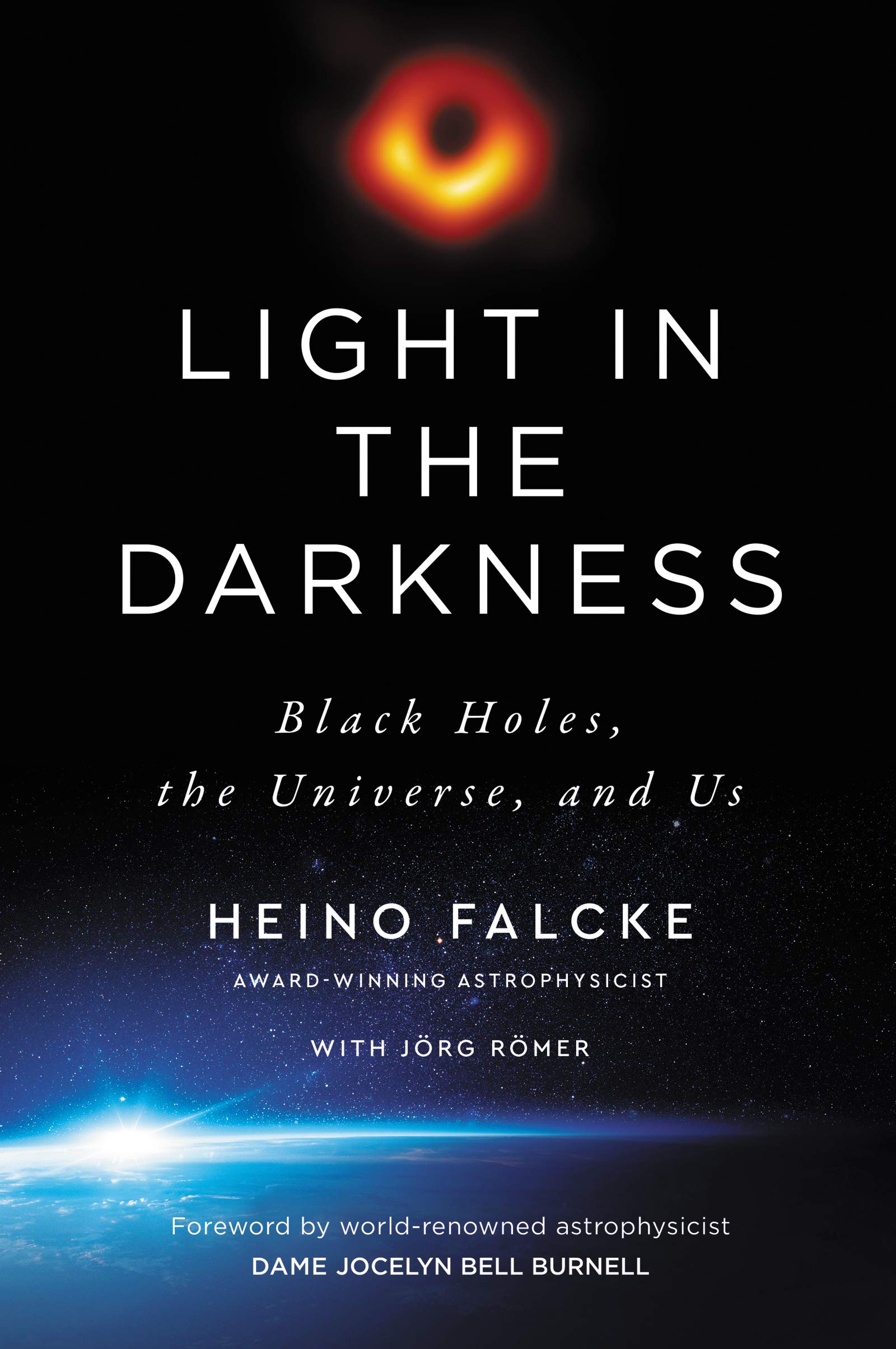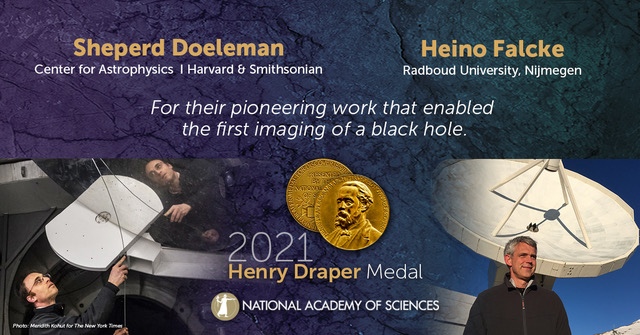Professor of Astroparticle Physics and Radio Astronomy
Heino Falcke
Professor Heino Falcke is an astrophysicist at Radboud University, investigating the depths of the sky.
He is author of the bestselling book “Licht im Dunkeln” (Light in the Darkness”)
Heino Falcke is Professor of Astroparticle Physics and Radio Astronomy at the Institute for Mathematics, Astronomy and Particle Physics (IMAPP) of the Faculty of Science at Radboud University in Nijmegen and is visiting scientist at the Max Planck Institute for Radio Astronomy in Bonn. He studies black holes and high-energy elementary particles, using the entire range of theoretical, computational, observational and experimental astrophysics. As a speaker and author he is engaged in communicating science to the public.
A list of his scientific publications can be found here.
His scientific achievements earned him knightly accolades from the Dutch King. He received the Spinoza Prize, the highest scientific award in the Netherlands, and the Academy Award of the Berlin-Brandenburg Academy of Sciences and Humanities, and the Henry-Draper medal of the US National Academy of Sciences for his pioneering work for imaging black holes. He is a member of the Royal Netherlands Academy of Arts and Sciences (KNAW). The International Astronomical Union named asteroid 12654 (Heinofalcke) after him. In his free time Heino Falcke, is active as an ordained lay-clergy in the protestant church in his home town in Germany.
CURRICULUM VITAE
2023: The William E. and Elva F. Gordon Distinguished Lectureship at Cornell University
2015 – present: Scientific Director, Radboud Radio Lab, Radboud University, Nijmegen
2011: Department Head (temporary), Astrophysics Department, Radboud University, Nijmegen
2007 – present: Full Professor of Astroparticle Physics and Radio Astronomy, Radboud University, Nijmegen
2003 – 2007: Extra-ordinary Professor in High-Energy Astrophysics at the Radboud University Nijmegen and senior scientist LOFAR, ASTRON, Dwingeloo, The Netherlands
2003: Temporary professorship (C3-Lehrstuhlvertretung, Prof. A. Eckart), I. Physikalischen Institut der Universität zu Köln
2000-2003: Staff scientist, MPIfR, Bonn (VLBI group)
1999: Visiting professor, Dept. of Astronomy & Steward Observatory, University of Arizona, Tucson, USA
1997-1999: DFG Stipendiary (Habilitationsstipendium), RFW-Universität Bonn & MPIfR Bonn
1997: PostDoc, MPIfR Bonn, director Dr. A. Zensus (VLBI group)
1995-1997: Research Associate at the University of Maryland at College Park & visiting scientist STScI Baltimore
1994-1995: Postdoctoral Max-Planck Stipendiary in the Optical Interferometry group of the MPIfR Bonn, director Prof. G. Weigelt
1992-1993: Research assistant, RFW-Universität Bonn
1987-1988: Computer docent at DEC/DIGITAL Corp. (part-time)
1987: Student worker, University clinics Cologne, “Simulation of cell kinetics”
Honors
2023: Balzan Prize by the International Balzan Prize Foundation
2023: Herschel Medal by the Royal Astronomical Society
2021: Henry Draper Medal of the National Academy of Sciences
2021: Amaldi Medal (European Prize for Gravitation) by the Italian Society of General Relativity and Gravitation
2021: R.M. Petrie Prize Lecture by the Canadian Astronomical Society
2020: Group Achievement Award of the Royal Astronomical Society (as member of the Event Horizon Telescope collaboration)
2020: Einstein Medal of the Albert Einstein Gesellschaft (Bern, ceremony postponed to 2021)
2020: Breakthrough Prize for Fundamental Physics by the Breakthrough Foundation and the Bruno Rossi Prize 2020 of the American Astronomical Society (as member of the Event Horizon Telescope Collaboration)
2019: 19th Hintze lecturer, University Oxford
2019: Academy lecture & medal, Akademie der Wissenschaften, Heidelberg
2016: Knight in the order of the Netherlands Lion
2015: Hermesdorfprijs Internationaal, Radboud University Nijmegen
2014: Appointed member of the Royal Netherlands Academy of Arts and Sciences (KNAW)
2013: European Research Council Synergy grant (14 M€, together with MPIfR Bonn & University of Frankfurt), Managing PI
2013: Appointed member of the Academia Europaea
2011: NWO Spinoza Award, highest NL science award (2.5 M€)
2009: Helmholtz lecturer, Humboldt-Universität zu Berlin
2008: European Research Council Advanced Investigator Grant (3.5M€)
2006: Visiting Miller Professorship Award, University of California, Berkeley
2006: „Akademiepreis“ (Academy Award), the highest honor of the Berlin-Brandenburgische Akademie der Wissenschaften (former „Preußische Akademie der Wissenschaften“), (20,000.- €)
2000: Ludwig-Biermann-prize for an outstanding young scientist, Astronomische Gesellschaft (AG), (5,000.- DM)
1997: DFG Habilitation stipend
Research Interest
Heino Falcke is a theoretical astrophysicist and radio astronomer who made fundamental contributions to the understanding of black holes and cosmic particles. He developed a unified model to explain the broad-band emission and the jet-disk coupling of the vast majority of black holes and discovered the “fundamental plane relation”, connecting and unifying super massive and stellar mass black holes. He pioneered the idea to image the “shadow of a black hole” with global millimeter-wave interferometry. He was managing PI of the ERC-funded BlackHoleCam project, co-founded the Event Horizon Telescope and contributed with his group and as chair of its science council to it. This led to the publication of the first ever image of a black hole.
To improve this image, Falcke hopes to build the African mm-wave Telescope AMT in Namibia. Falcke also co-developed the LOFAR telescope and pioneered the detection of cosmic rays with radio antennas. The technique provides precision measurements of the cosmic ray composition and allows studying their origin. The method was successfully implemented in the LOFAR telescope and is now integrated into the large Pierre Auger Observatory. As PI of a low-frequency radio experiment (NCLE) on board of the Queqiao satellite behind the moon, he wants to pioneer the exploration of the dark ages of the early universe. More details can be found here.
Space Exploration
Heino Falcke is engaged in the exploration of space, motivated by the possibility to put a LOFAR-like radiotelescope on the moon. He was involved in various studies and committees of EADS and ESA and is principle investigator (PI) of the low-frequency radio astronomy experiment NCLE onboard the Chinese lunar relay satellite Queqiao. Currently he is also involved in ongoing studies to develop new space-VLBI instruments to image black holes at unprecedented resolution, e.g. with the Event Horizon Imager.


